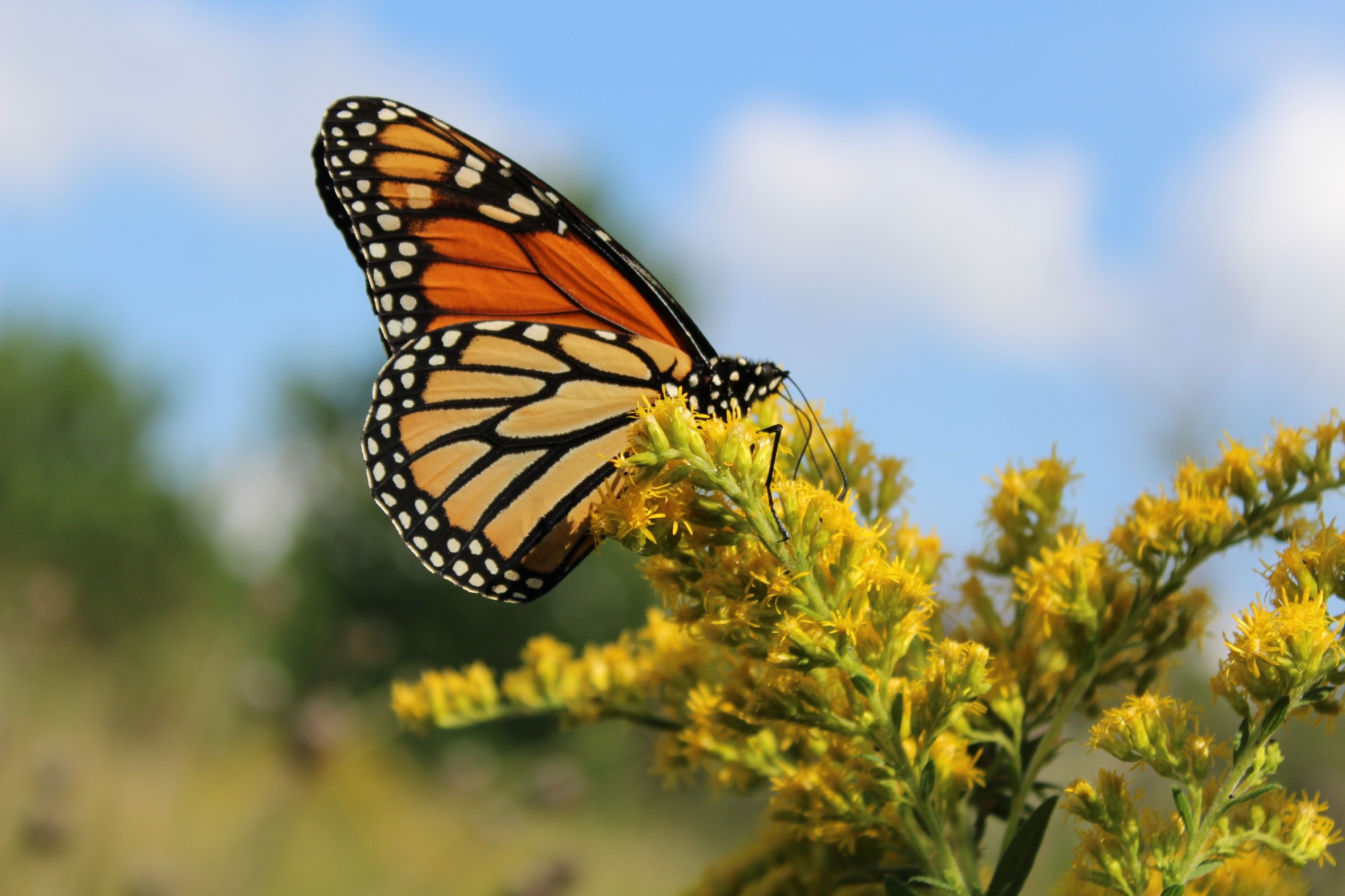
September Nature Notes – 2023
Time to listen with our eyes! Migration is underway!
Wow! September already! It is hard to believe that it is time for the Autumnal Equinox, Saturday, September 23, the Full Harvest Moon, Friday, September 29, 2023. A New Moon will occur Friday, September 15. Such a beautiful time of year, but also a little bittersweet, as we say good-bye to many species on their migration journey.
The subtle silence of songbirds has been quite noticeable the last few weeks. Many of our long-distance migrants have begun their south-bound journey to South and Central America. If you feed the orioles and hummingbirds, please continue feeding. Migrating hummingbirds can continue into the latter part of October. The songbirds are not in a huge rush in the fall and will take their time to get to where they are going. Spring migration is the mad rush and push to get to their breeding grounds before territories are taken.
August brought numerous shorebirds, pelicans, and egrets to the Lake Red Rock area and it will increase through the month of September. Many of the birds coming in first are the young birds, the adults will follow. If you have driven around the lake, the birds of white (pelicans and egrets) have been moving in daily. The pelicans flight can be a breathtaking view if you catch it on a blue-sky day. A few shorebirds that have been spotted are semipalmated sandpipers, yellowlegs, numerous Franklin’s Gulls, avocets, and buff-breasted sandpipers. Gadwalls and blue-winged teal will be making some southward movement. The woodduck migration usually begins in September.
It is our hopes that we can catch some views of the Monarch migration this month. Numbers are low but hope there are many strong ones to make their trip. Butterfly numbers and species seem to be down this year. Let’s hope we will continue to be spotting more in September as the asters begin to bloom. These are the butterflies that have been spotted on lakeside and roadside the last week of August: Indigo duskywings, sootywings, viceroys, buckeyes, monarchs, red admirals, commas, question marks, little yellows; clouded, cloudless and orange sulphurs, cabbage whites, E. tailed-blues, gray hairstreak, great spangled fritillary, and skippers.
Dragonfly migration has begun. The common green darners and black saddlebags have been moving. Others that we are hoping to see are numerous species of meadowhawks, wandering gliders, spot-winged gliders, and some of the most spectacular darners coming from the north. This is such an exciting time and learning experience for many of us. The study of our real-life dragons and damsels have provided new light and great experiences to life and habitats of critical environmental indicators.
This is also a great month to watch the blue-jays, squirrels, chipmunks, muskrats, and others caching their food for winter.
Spiders, robberflies, wasps, praying mantis, and many other insect predators will be out and about! Cooler weather and lots of bugs to eat. We will just call this the beginning of insect retirement. More about this later in the month.
Bats are our only flying mammals. Do they migrate, hibernate, or both? Most Iowa bats migrate south in the fall, some spend the winter hibernating in caves, particularly in Eastern Iowa. The Big Brown Bat is the only Iowa bat that sometimes is found hibernating in heated buildings, and no bats can survive in places that routinely reach temps below the freezing point. The forest dwelling bats are most often solitary until fall migration. The Hoary bat is Iowa’s largest bat, with a wingspan of 13-16 inches. These bats undertake long seasonal migrations, sometimes traveling as far south as Panama to spend the winter before returning to Iowa in the spring. Bat migration normally begins late July through August, but there will “possibly” be more movement.
Fall orchids, such as Autumn coralroot and oval ladies’-tress’ will be blooming – not always easy to find, but it is always fun to see one of Iowa’s 32 species of orchids. Autumn coralroot lacks chlorophyll, it requires the presence of an ectomycorrhizal fungi within the soil. The flowering period is late August or mid-September. The native coralroot can be three to ten inches tall and have a yellow-green or purplish-brown color midway up the scape. There may be five to twelve reddish-purple flowers with a yellowish-green color cast. The oval ladies’-tress’ have been considered “charming” by those who trek for Iowa orchids. The height can vary from three to twelve inches tall. Two to four basal leaves are one to six inches long and 1/4-3/4” across. There are sheath-like alternate leaves located along the lower half of the flowering stalk during the blooming period. The flowers are white to a light green and grow along the upper part of a slender stem in a tight, vertical spindle giving it a corkscrew or spiral appearance. Another plant to look for is Indian Pipe – a plant that also lacks chlorophyll.
It's always a great time to take in a visit to the Neil Smith National Wildlife Refuge. It is currently mating season for the bison, so morning visits may bring the bulls and cows together making for a great viewing opportunity. How lucky we are to be so close this refuge, its vast prairie, wetland and savanna habitats and diverse wildlife species.
All species that are observed and studied have significance of telling us more about the quality of our environment… IF we stop and take the time to listen with our eyes.
